Did you know that a leaking pipe can waste up to 10,000 gallons of water a year? That’s enough to fill a backyard swimming pool! Now, picture the silent threat lurking under your sink, behind your washing machine, or next to your water heater. Water leaks can strike without warning, causing thousands of dollars in damage before you even spot a puddle. Fortunately, smart water leak detectors offer a modern, hands-off solution—catching leaks fast and saving homeowners time, money, and peace of mind. In this guide, you’ll discover the power and practicality of making your home “smart” against water damage.
Water Damage: Why Smart Water Leak Detectors Are Essential for Protecting Your Home
Homeowners face a hidden but real risk: water damage caused by undetected leaks, burst pipes, and floods. The impact isn’t just cosmetic—water damage can undermine structural integrity, warp hardwood floors, destroy personal belongings, and even lead to hazardous mold growth. Just a minor drip under the sink or a slow leak from a washing machine hose can result in major headaches. Insurance companies report that water damage is the second-most common home claim, with average repairs easily exceeding $5,000-$10,000. That’s why experts now recommend adding smart water leak detectors to your home security toolkit.
With today’s smart home technology, these leak detectors deliver a new level of protection. These devices monitor hidden and high-risk locations—behind toilets, under the dishwasher, beside your water heater—and alert you via app or smart speaker if trouble is detected. In mere moments, you can receive alerts on your phone from anywhere, guiding you to prevent a disaster before it starts. By installing smart water sensors and leveraging wifi water leak alerts, you’re putting cutting-edge defense between your home and the havoc of water damage.
"Did you know that a leaking pipe can waste up to 10,000 gallons of water a year? Early detection with smart water leak detectors can save you thousands and provide peace of mind."
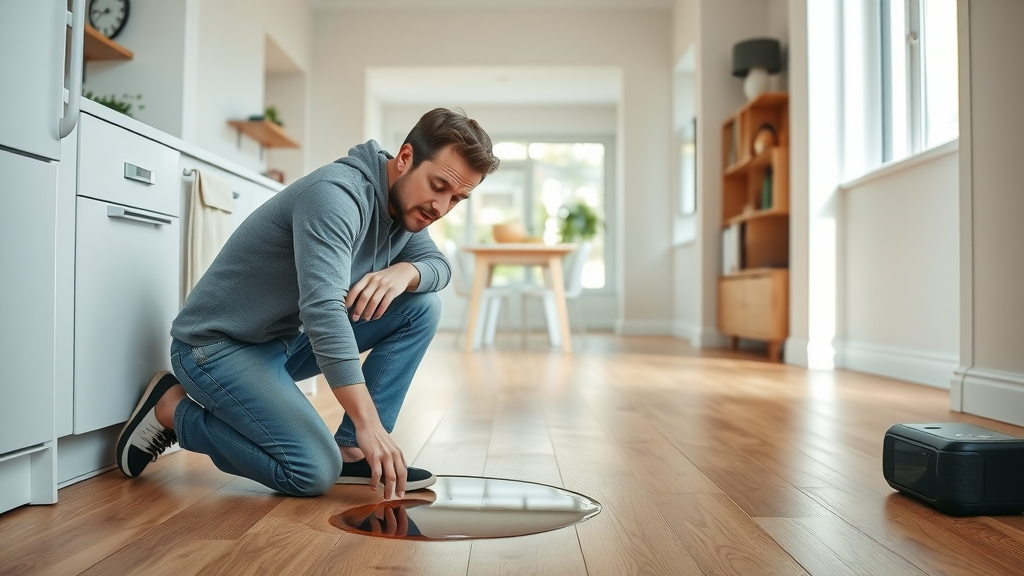
The Startling Cost of Water Damage
The financial impact of water leaks can be truly surprising. Not only do you face the costs of immediate repair and water extraction, but hidden damages like soaked insulation, warped cabinets, or electrical shorts can stack up fast. In fact, the EPA estimates that the average household’s leaks account for nearly 10,000 gallons of wasted water yearly, leading to inflated water bills and potential mold remediation costs. Most homeowners aren’t prepared for how quickly a "small" leak can turn into a full-blown home crisis that insurance may only partially cover. Investing in a smart leak detector is not just a matter of convenience—it’s a proactive shield against preventable, expensive repairs, giving you the chance to take swift action and avoid a sudden, overwhelming expense.
When you compare this to the relatively modest cost of most leak detectors, there’s no question that early detection matters. Damage from water leaks isn’t just about repairs; there’s also the cost of time off work, inconvenience, and the emotional toll of losing irreplaceable items. With smart water sensors and wifi water leak technology, you’re minimizing the odds of such mishaps. The result? Lower insurance claims and a safer, drier home.
How Smart Water Leak Detectors Offer Immediate Protection
Smart water leak detectors are designed to work around the clock, monitoring key locations throughout your home. The moment the sensor detects moisture where there shouldn’t be any, it sends an immediate notification to your smartphone, tablet, or integrated smart home system. This real-time alert system is the difference between a few droplets and a household catastrophe. Many leak detectors are equipped with temperature monitoring—so you’re alerted not only to water leaks but also the risks of a frozen pipe that could burst in cold weather.
Imagine this: while you’re away, a water heater valve fails. Without a sensor, hours—if not days—could pass before discovery, resulting in ruined flooring and massive restoration bills. A reliable water leak detector, connected to your wifi network, catches these events in real-time. Some models automatically trigger shut-off valves or integrate with home automation platforms for seamless peace of mind. That’s immediate, intelligent protection—something every modern home should have.
What You'll Learn About Smart Water Leak Detectors
- What smart water leak detectors are and how they work
- The leading features and benefits of top models
- Expert recommendations for protecting your smart home
- Answers to popular questions about water leak detection
Understanding Smart Water Leak Detectors: Features & Functionality

How Do Smart Water Leak Detectors Work?
Smart water leak detectors are small, advanced devices that constantly scan for excess moisture—often using highly sensitive metal contacts or electrodes. When these contacts bridge due to presence of water or high humidity, the sensor sends a signal to a hub or directly to your wifi network. Instantly, an alert appears on your phone, tablet, or smart device, keeping you informed whether you’re at home or miles away. Many top models also monitor temperature spikes or drops, alerting you to risks like a frozen pipe, which can cause severe damage in colder climates. Some detectors even allow integration with automated water shut-off valves or third-party home devices, providing hands-free prevention.
This technology isn’t just limited to one area. Homeowners can deploy multiple sensors throughout the property—in the kitchen, laundry room, basement, or under every sink. With options for networked or standalone systems, you’re free to customize coverage and ensure every risk area is protected. This constant vigilance is what makes smart leak detectors an unbeatable addition to your smart home ecosystem.
Key Features of Smart Water Leak Detectors: From Wifi Water Leak Alerts to Temperature Monitoring
When evaluating smart water leak detectors, look for these must-have features:
- Wifi water leak alerts: Receive notifications right to your smartphone for instant awareness.
- Temperature monitoring: Prevent a frozen pipe disaster by tracking temperatures near vulnerable plumbing.
- Battery life: Top models last 1-3 years on standard batteries, reducing maintenance headaches.
- High sensitivity: The best leak sensors react to even the smallest puddle or drip.
- Easy integration: Most devices work seamlessly with smart home platforms like Alexa, Google Home, and Apple HomeKit.
- Extension cable options: Reach into tricky spots behind appliances for thorough coverage.
- Multiple sensor capability: Link several water sensors for comprehensive, whole-home protection.
Features like these ensure you always have time to act. Advanced app notifications, customizable alert types, and even the ability to connect to other home automation devices make leading water leak detectors a smart investment for any homeowner.
Where to Install Water Sensors and Leak Detectors in Your Home
For the best protection, install smart water sensors in locations where leaks are most likely—and most damaging. High-risk zones include:
- Under kitchen and bathroom sinks
- Behind washing machines and dishwashers
- Near water heaters and boilers
- By toilets and under refrigerators with water dispensers
- Basements, crawl spaces, and utility rooms
Placing sensors at these points ensures you won’t miss a leak, whether it’s a subtle drip or a sudden flooding event. Using color-coded layouts or house diagrams can help homeowners visualize the best spots for leak detectors. Remember, leaks often start in hidden or low-traffic areas—so don’t overlook corners and dark spaces!
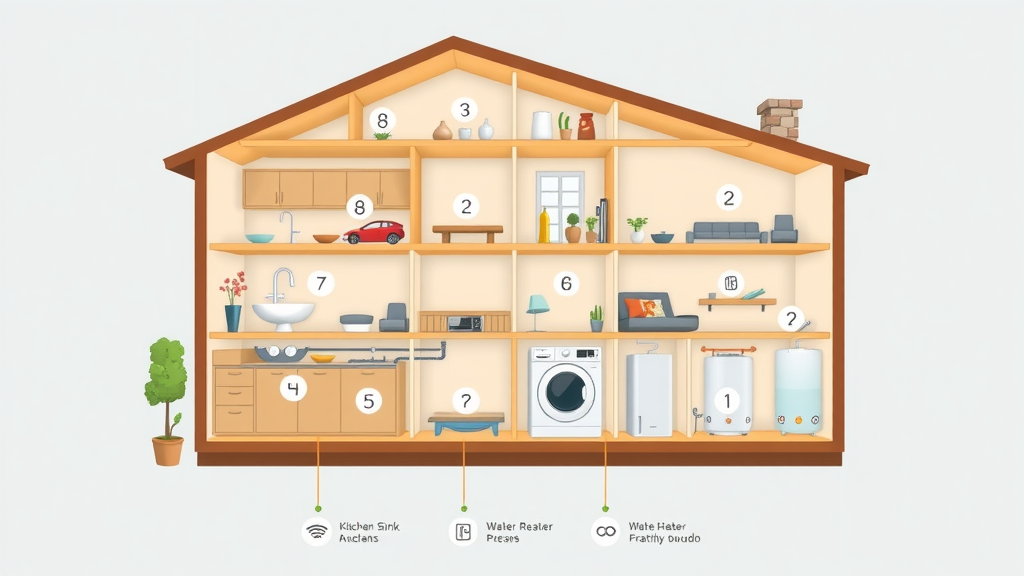
Integration with Smart Home Systems (Alexa, Google Home, Apple HomeKit)
One of the standout benefits of modern smart leak detectors is their seamless compatibility with leading smart home systems. Out of the box, many models connect to Amazon Alexa, Google Home, and Apple HomeKit, making it easy to receive alerts on your preferred device or via voice announcement throughout your home. Integration also opens the door for advanced automation: picture your smart lights flashing red when a leak is detected, or your smart speaker guiding you to the exact room in trouble.
Automated routines allow for scenarios like automatically shutting off a smart water valve in response to a detected leak, sending instant notifications to family members, or syncing leak alerts with home security systems. These ecosystem connections transform a basic moisture sensor into a powerful, communicative safeguard for your home—offering personalized protection, no matter which platform you prefer.
Top Picks: The Best Smart Water Leak Detectors for 2024
Phyn Smart Water Sensor Review
The Phyn Smart Water Sensor ranks as our top pick for robust protection and easy setup. It stands out for its high sensitivity, reliable wifi water leak alerts, and impressive integration with smart home hubs. Phyn uses advanced algorithms to differentiate between minor dampness and real threats, minimizing false alarms. The unit features a built-in temperature and humidity monitor, and its long-life battery means minimal fuss for the homeowner. Plus, the companion app delivers instant notifications, offers historical leak data, and guides you through very intuitive installation.
With extension cable support, the Phyn Smart Water Sensor can reach behind big appliances like your washing machine, covering spots most likely to see leaks. Trusted by both tech experts and homeowners, it’s a favorite for those looking for thorough, reliable, whole-home water leak detection in a device that “just works.”
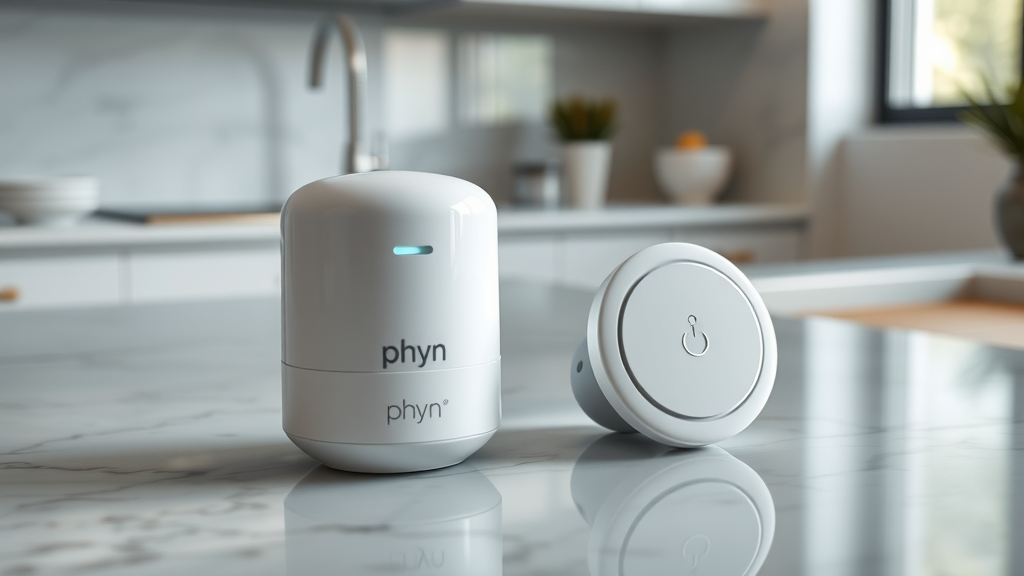
Moen Smart Water Leak Detector: Performance & Features
The Moen Smart Water Leak Detector is another top contender, prized for its compact design and powerful performance. The Moen sensor is easy to place in tight spaces like under sinks or beside your water heater. Its wifi connectivity delivers fast alerts and integrates straight into the Moen app, putting leak and temperature status at your fingertips. Users appreciate the intuitive setup, strong app support, and the extra layer of security from temperature monitoring—which is ideal for detecting frozen pipe risk during winter months.
Moen’s detector is also highly compatible with main smart home ecosystems, making it a great addition to homes using Alexa, Google Assistant, or Apple platforms. With clear, actionable notifications and a reputation for consistency, the Moen sensor is a practical solution for homeowners seeking reliable coverage and peace of mind.
Comparing Leak Sensor & Water Leak Detector Brands
When choosing a smart water leak detector for your home, it pays to compare the features, price, and usability of leading brands. Some sensors boast extended battery life and wider detection ranges, while others stand out for app functions or home devices compatibility. It’s worth considering how easy it is to set up multiple sensors for whole-home coverage, and whether brand-specific integrations with your chosen smart home platform will maximize results.
In addition to Phyn Smart Water Sensor and the Moen Smart Water Leak Detector, other noteworthy brands include the Honeywell Lyric, Samsung SmartThings, and D-Link. Compare model-specific features like built-in alarms, remote shut-off valve control, multi-zone monitoring, and customer service reputation to find the perfect fit for your property and your budget.
| Brand | Key Features | Connectivity | Price (Approx.) | Expert Rating |
|---|---|---|---|---|
| Phyn Smart Water Sensor | High sensitivity, temp/humidity monitor, app, extension cable support | Wifi, Alexa, Google, Apple | $39 | 4.8/5 |
| Moen Smart Leak Detector | Compact, temp monitoring, strong app support, broad compatibility | Wifi, Alexa, Google, Apple | $39 | 4.7/5 |
| Honeywell Lyric | Multi-zone, home automation, replaceable battery | Wifi, Alexa | $35 | 4.5/5 |
| D-Link Wifi Water Sensor | Audio/visual alerts, app access, affordable | Wifi | $29 | 4.3/5 |
Why Invest in Smart Water Leak Detectors? Protect Your Home from Costly Water Damage
Early Detection of Water Leaks and Frozen Pipes
The real power of smart water leak detectors lies in their ability to spot trouble early. As soon as unwanted moisture or drastic temperature changes are detected (hinting at a frozen pipe scenario), the system sends an instant notification. Unlike traditional alarms or periodic checks, smart sensors work continuously and never miss a beat, day or night. This can mean the difference between a quick mop-up and a costly insurance claim—especially when you’re away on vacation or at work.
For families in colder climates, temperature sensing models provide an extra layer of safety, alerting you before a burst pipe turns your basement into a lake. By empowering homeowners with live data and customizable alerts, smart leak detectors enable truly proactive protection.
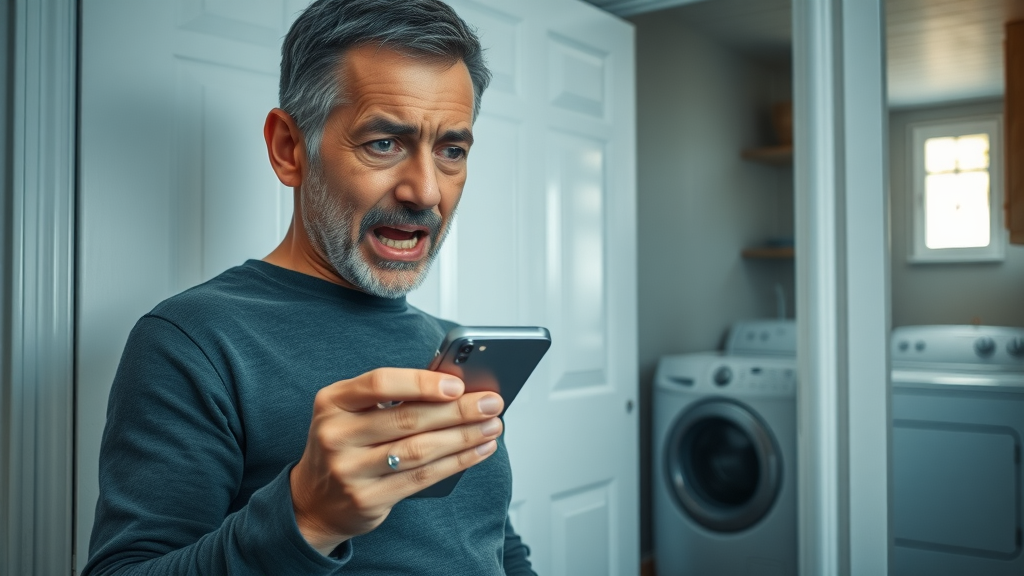
Automatic Alerts via Wifi Water Sensors
The promise of wifi water leak detectors is instant, actionable updates. The moment moisture is detected, your water sensor communicates via wifi, triggering a notification that lands directly on your mobile device or integrates into your smart home system. No more relying on happenstance or annual inspections—the moment your water heater, dishwasher, or washing machine springs a leak, you can act fast.
Many leading models even feature multiple communication methods: push notifications, emails, text messages, and integration with smart speakers. This redundancy ensures you never miss a critical alert, no matter your preferred device. Advanced systems can also trigger shut-off valves or call home automation routines, truly minimizing the time between detection and action.
Minimizing Insurance Claims and Repair Costs
Proactivity pays off—both in peace of mind and in your wallet. Insurers increasingly recognize smart water leak detectors as a best-in-class risk mitigation tool. Installing leak detectors may make you eligible for discounts or incentives on your homeowner’s policy, and most importantly, can prevent claims before they begin. Quicker detection means smaller repair bills, reduced replacement costs for furniture and flooring, and less time dealing with remediation or mold risks. In the end, an investment in a smart sensor pays dividends by keeping your home—and your finances—safe from the worst consequences of water leaks.
With mounting evidence and expert testimonials, wifi water leak detectors are the clear pick for loss prevention in the modern smart home. Every minute saved could mean hundreds (if not thousands) of dollars not spent on insurance deductibles and restoration projects.
Smart Home Integration: Connecting Your Smart Water Leak Detectors
Wireless Setup: Wifi Water Leak Detectors in Action
Setting up a wifi water leak detector is refreshingly straightforward for most homeowners. Most models require nothing more than pairing each smart water sensor to your home’s wifi, placing them in chosen risk zones, and syncing with your phone via the manufacturer’s app. The wireless design means that you won’t need to fuss with complicated cabling or hardwired systems.
Once installed, the sensors operate autonomously, sending updates, history logs, and live alerts. The ease of setup makes expanding coverage a breeze—simply add more leak sensors over time to cover basements, attics, or new appliances. For tech-savvy users, the option to integrate with smart shut-off valves or home automation routines is a bonus, helping to further minimize risk.
Smart Device Compatibility: Make Your Water Sensor Work with Your Network
Compatibility is central to the convenience of smart water leak detectors. Whether you’re outfitting a new build or retrofitting an older property, choose sensors designed to mesh with your preferred platforms—be it Amazon Alexa, Google Home, Apple HomeKit, or others. Leading brands enable you to receive spoken alerts, activate “leak detected” lighting scenes, or even automatically shut off your main water supply—all controlled via your existing smart device ecosystem.
This flexibility means smarter, more tailored responses to emergencies. Instead of relying on just a beep or text, your home system works together for layered protection—making every sensor and every device part of a unified defense strategy.
Choosing the Right Smart Water Leak Detector for Your Home
Key Factors: Water Sensor Sensitivity and Detection Range
The right smart water leak detector for your home should match your unique layout and risk points. Focus first on sensor sensitivity—some devices can detect just a few drops, while others require more standing water. Detection range matters too; larger rooms or basements may need sensors with extended reach or the ability to daisy-chain via extension cable for broader coverage.
Room layout, plumbing configuration, and personal needs all influence the selection. Some homes might benefit from linking multiple sensors covering zones from the attic to the utility room, ensuring nothing escapes your new layer of home automation protection.
Battery Life, App Notifications, and Usability
Don’t overlook practical considerations like battery life and ease of use. The best leak detectors should run for a year or more without a battery swap, and offer clear, hassle-free indicators for when power is low. User-friendly apps can make a specific detector stand out, providing easy setup, swift notifications, and detailed reporting history. Look for models with well-reviewed support channels and simple, quick troubleshooting guides—so you’re never caught off guard by a sensor that’s unexpectedly offline.
Simple setup, reliable alerting, and robust app controls are especially important for households with multiple residents, busy schedules, or vacation rentals that need constant, remote monitoring.
Smart Leak Detector Maintenance Tips
Like all smart devices, smart water leak detectors benefit from occasional touch-ups to ensure optimal performance. Regularly test each water sensor to verify detection capability, and set a calendar reminder to replace batteries annually. Cleaning contacts and updating your app/software ensures prompt communication and minimizes false alarms.
Don’t forget to check for firmware updates from manufacturers, as new features and stability improvements are often rolled out. Keep your sensor network nimble and responsive by moving sensors when you renovate or add new appliances, and reviewing app notifications for unusual patterns.
Customer Reviews: Real Experiences with Smart Water Leak Detectors
- Major pros and cons reported by homeowners: Many praise peace of mind, quick alerts, and easy installation. Some mention wifi dropouts or false alarms as minor drawbacks, especially with cheaper models.
- Success stories: Several users report averting disasters by catching water leaks under sinks or from malfunctioning washing machines, preventing costly floor replacements.
- Challenges and considerations: Real users highlight the importance of battery checks and ensuring proper placement for reliable coverage—especially in larger homes or basements.
People Also Ask: Frequently Searched Questions
What is the best smart water leak detector?
The best smart water leak detector offers reliable wireless connectivity, instant alerts, broad coverage, and integration with your smart home system. The Phyn Smart Water Sensor and Moen Smart Water Leak Detector are top picks for their accuracy, app control, and user-friendly installation.
Do water leak detectors really work?
Yes, smart water leak detectors use advanced sensors to detect even tiny leaks, sending alerts via wifi to your phone. When properly installed, they provide an essential safeguard against water damage, saving time and money.
How does a smart water leak detector work?
A smart water leak detector monitors moisture and sometimes temperature. When water is detected, the sensor triggers a notification through an app or smart device, allowing you to take action before major damage occurs.
What is the most effective leak detection method?
The most effective method is a network of smart water sensors placed in high-risk areas such as near washing machines, water heaters, or under sinks. Integration with a smart water monitor system maximizes protection.
Expert Advice: Bob Vila’s Smart Water Leak Detector Recommendations
"You wouldn’t leave your front door open — don’t let undetected leaks flood your home. Smart water leak detectors are your first line of defense." —Bob Vila
- Regularly test and replace batteries in your smart leak detector
- Sync your wifi water leak detector to your phone
- Check compatibility with your smart home devices
Key Takeaways from Our Smart Water Leak Detector Guide
- Stop water damage fast with timely alerts from smart water leak detectors
- Install leak sensors in vulnerable areas for whole-home coverage
- Choose models with strong app support and smart home compatibility
FAQs: Everything You Need to Know About Smart Water Leak Detectors
-
Can you install a smart water leak detector yourself?
Yes, most smart water leak detectors are designed for do-it-yourself placement—simply connect to wifi, position the device, and sync with an app for immediate protection. -
How do you maintain your water sensors for longevity?
Regularly check batteries, test sensors monthly, and make sure your app stays updated for consistent alerts and coverage. -
Are smart leak detectors effective for both small drips and major leaks?
Absolutely. Quality models can detect everything from slow drips to sudden floods, providing reliable protection in any scenario. -
Will my insurance company offer discounts for using water leak detectors?
Many insurers offer discounts for installing smart water leak detectors—a worthwhile conversation to have for added savings.
Conclusion: Protect Your Home with Smart Water Leak Detectors
Installing smart water leak detectors can help prevent costly repairs and water damage, keeping your home safe and your mind at ease. Don’t wait for disaster—act now and safeguard your property.
Take Action: Call Gold Coast Flood Restorations at (619) 449-9611
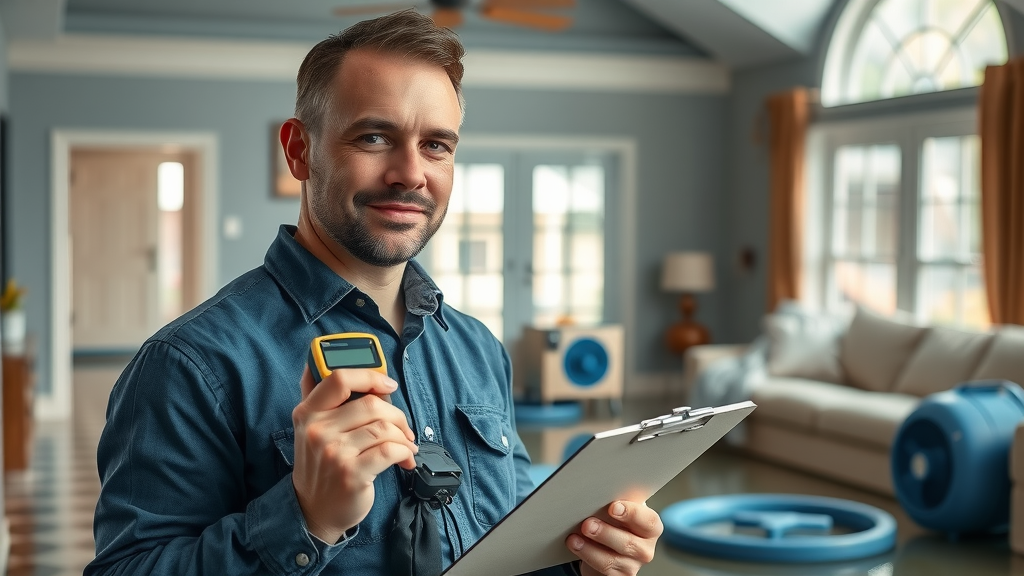
Ready to upgrade your home’s protection or need help recovering from water damage? Call Gold Coast Flood Restorations today for expert advice and immediate assistance.
Watch step-by-step instructions to ensure your smart water leak detector is installed correctly and ready to protect your home.
View demonstrations and reviews of the leading water leak detectors to find the best fit for your smart home needs.
Sources
- EPA: Fix a Leak Week
- Bob Vila: Best Water Leak Detectors
- Consumer Reports: Water Leak Detectors
- Insurance.com: Water Leak Detection Systems
To further enhance your understanding of smart water leak detectors and their benefits, consider exploring the following resources:
-
“Best water leak detectors”: This comprehensive guide from Tom’s Guide reviews top water leak detectors, detailing their features, pros, and cons to help homeowners prevent costly water damage. (tomsguide.com)
-
“7 Best Smart Water Leak Detectors of 2025”: Reviewed.com provides an in-depth analysis of the best smart water leak detectors, highlighting their performance, ease of use, and value to assist you in making an informed decision. (reviewed.com)
These articles offer valuable insights into selecting the right smart water leak detector for your home, ensuring you can effectively protect your property from potential water damage.
 Add Row
Add Row  Add
Add 



Write A Comment